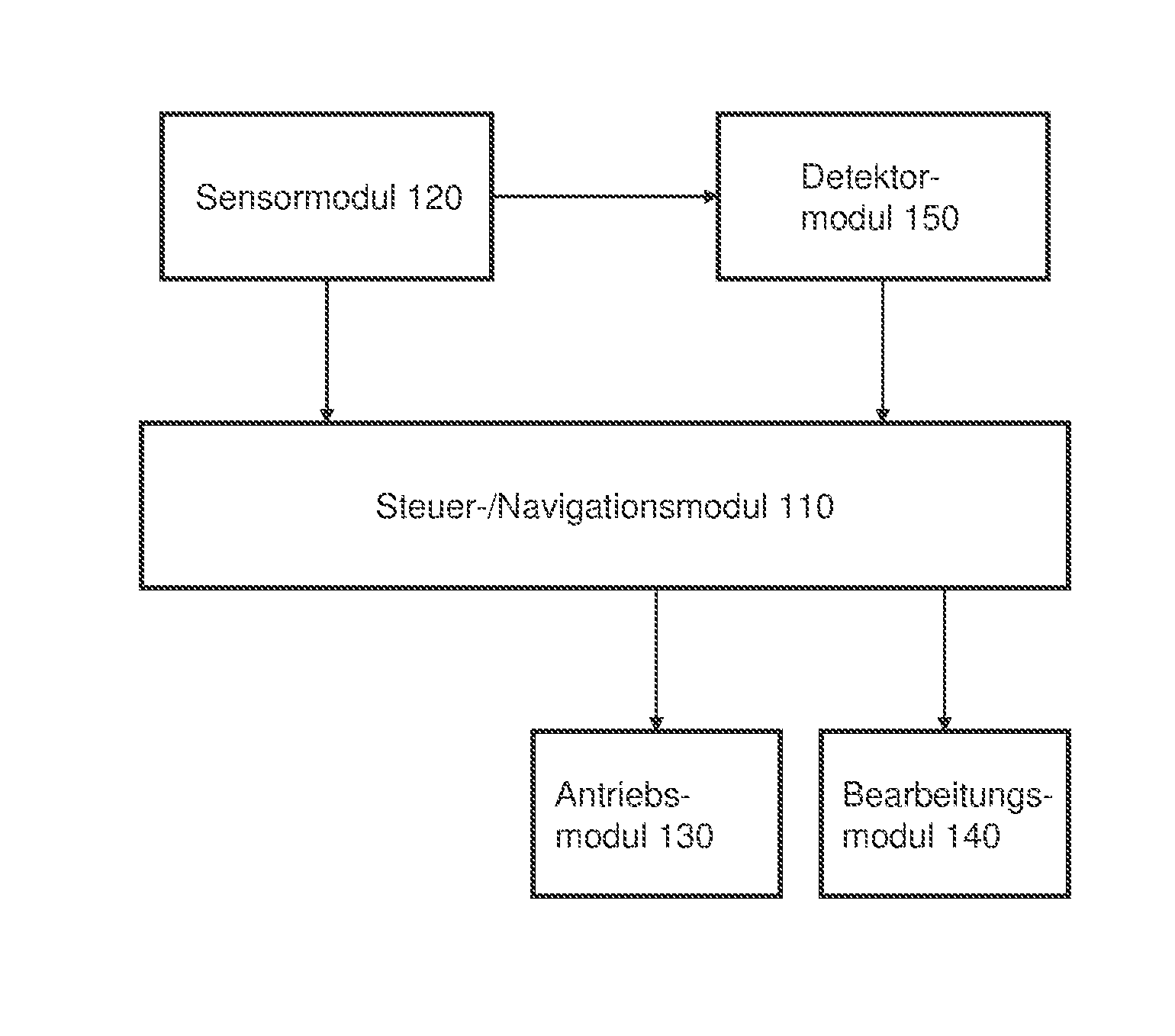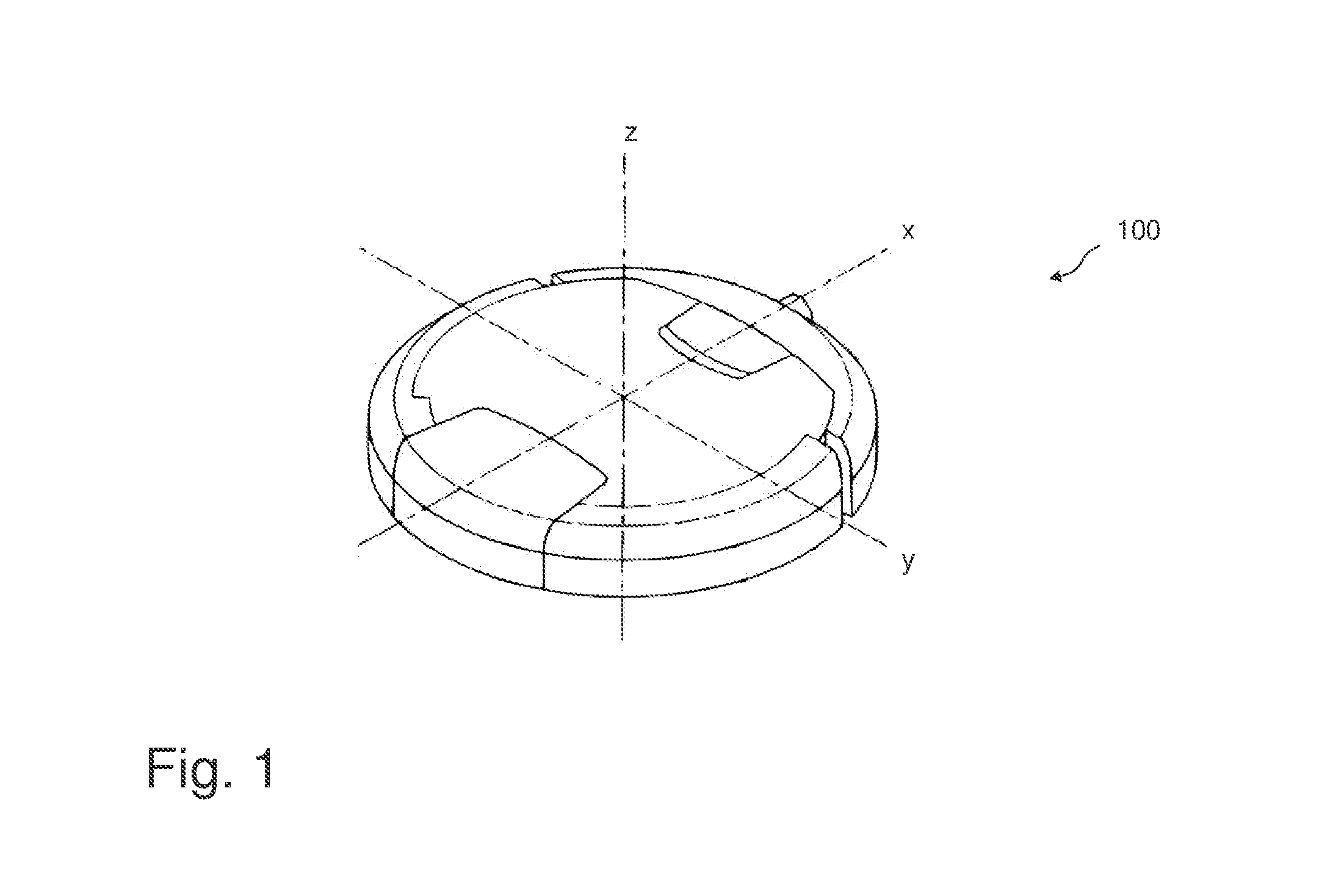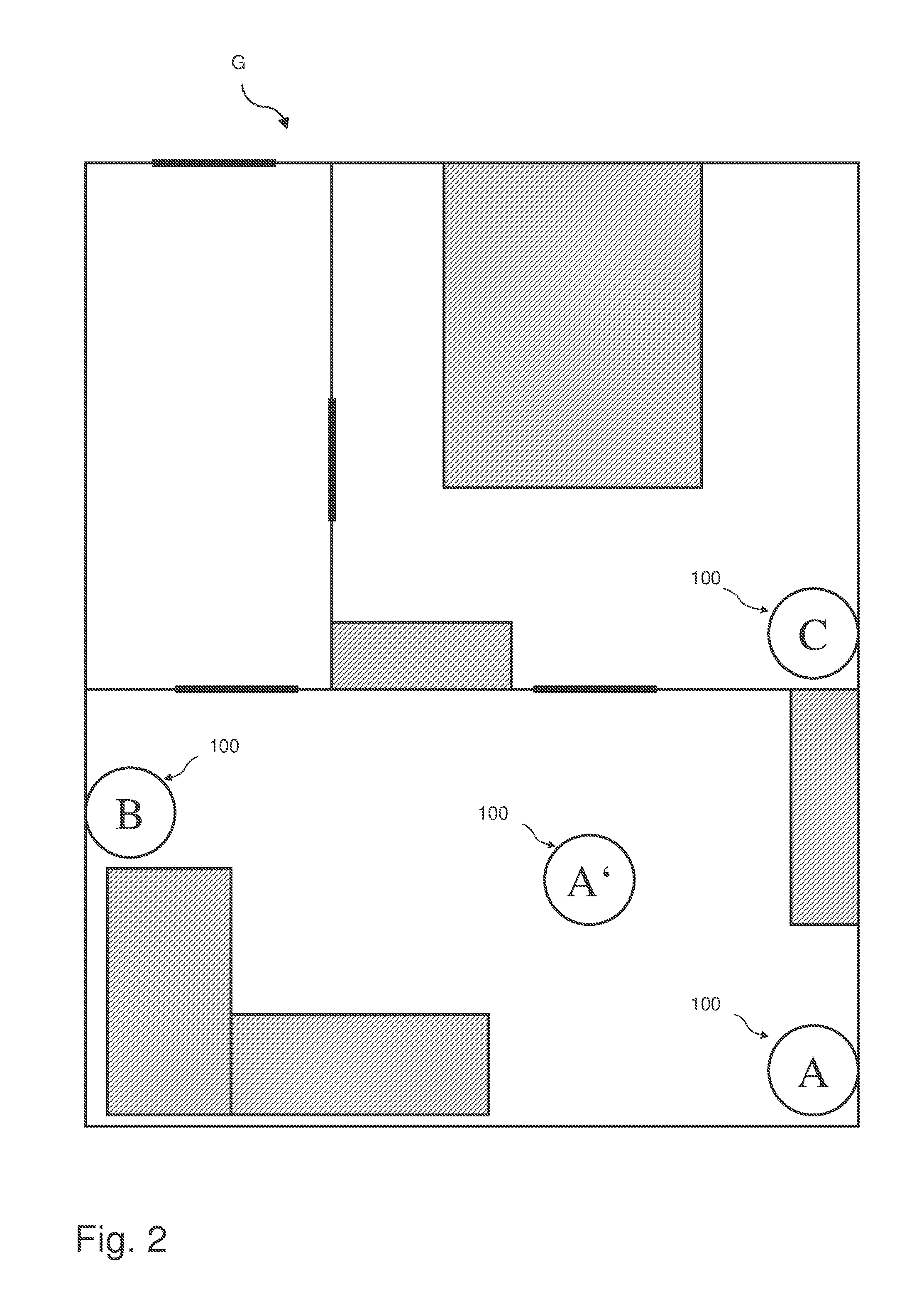Method for automatically triggering a self-positioning process
a self-localization and process technology, applied in the direction of distance measurement, programme control, instruments, etc., can solve the problems of delayed execution of tasks and long time-consuming self-localization process carried out according to such a method
- Summary
- Abstract
- Description
- Claims
- Application Information
AI Technical Summary
Benefits of technology
Problems solved by technology
Method used
Image
Examples
Embodiment Construction
[0018]FIG. 1 shows, by way of example, a schematic isometric illustration of a self-propelled robot 100 for autonomously cleaning floor areas. FIG. 1 also shows a Cartesian coordinate system with the origin in the center of the robot 100. Such devices are often—but not necessarily—in the form of a disk. The vertical axis z passes through the center of the disk. The longitudinal axis is denoted with x and the transverse axis is denoted with y.
[0019]The robot 100 comprises a drive module (not illustrated) which may have electric motors, gears and wheels, for example. The drive module may be designed, for example, to move the robot in the forward and reverse directions (this would be along the x axis in the illustration from FIG. 1) and to rotate the robot about the vertical axis (this would be the z axis in the illustration from FIG. 1). Therefore, the robot can—theoretically—approach any point of a floor area (which is parallel to the plane defined by the x axis and y axis). The robo...
PUM
 Login to View More
Login to View More Abstract
Description
Claims
Application Information
 Login to View More
Login to View More - R&D
- Intellectual Property
- Life Sciences
- Materials
- Tech Scout
- Unparalleled Data Quality
- Higher Quality Content
- 60% Fewer Hallucinations
Browse by: Latest US Patents, China's latest patents, Technical Efficacy Thesaurus, Application Domain, Technology Topic, Popular Technical Reports.
© 2025 PatSnap. All rights reserved.Legal|Privacy policy|Modern Slavery Act Transparency Statement|Sitemap|About US| Contact US: help@patsnap.com



